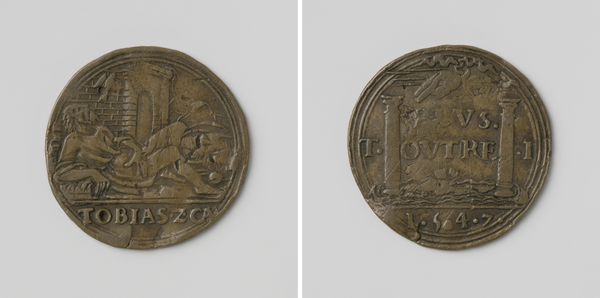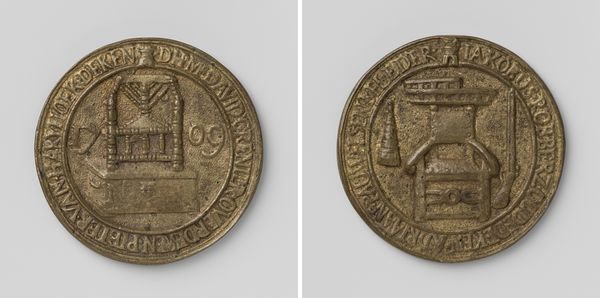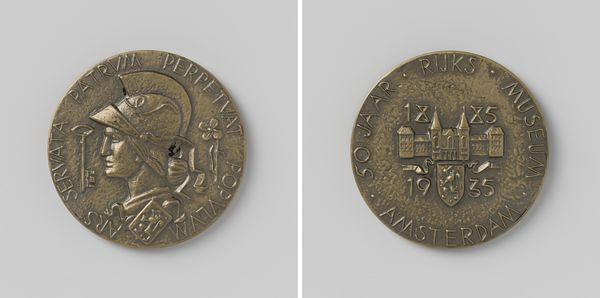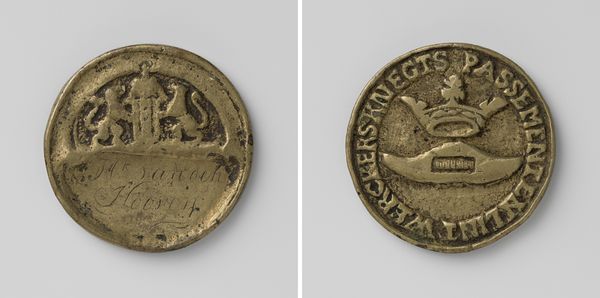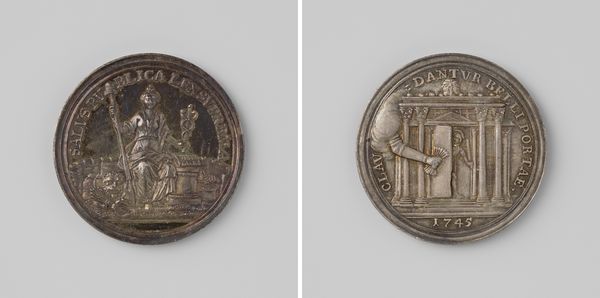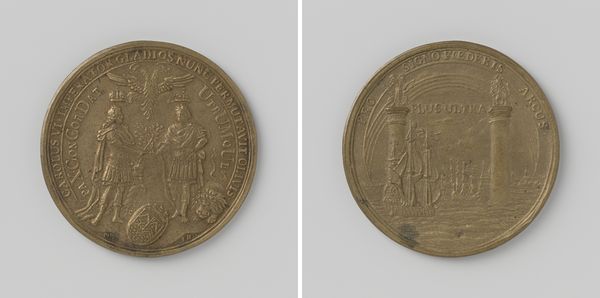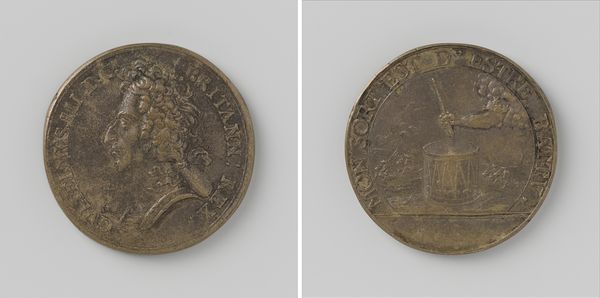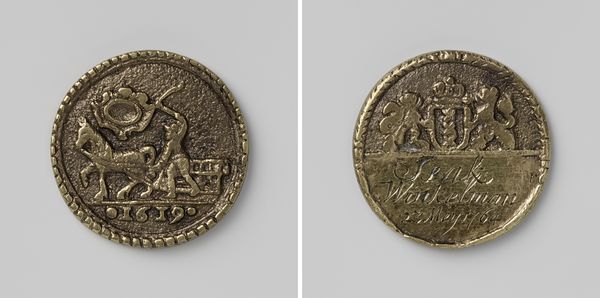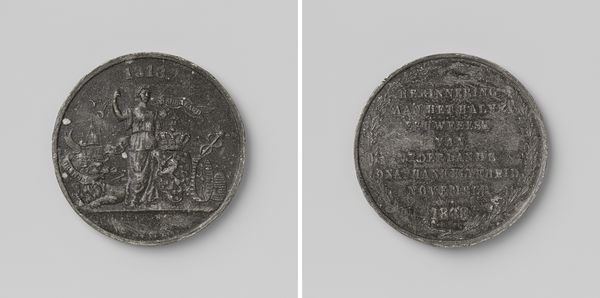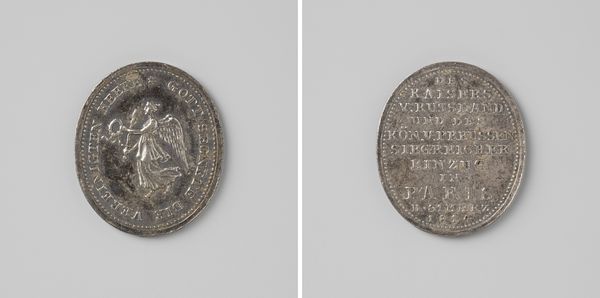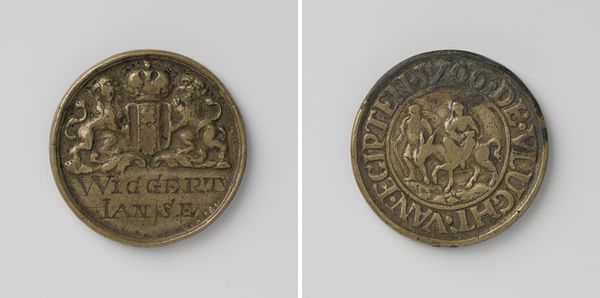
relief, bronze
#
portrait
#
medieval
#
sculpture
#
relief
#
bronze
Dimensions: diameter 5.2 cm, weight 42.73 gr
Copyright: Rijks Museum: Open Domain
Curator: This artwork, cast in bronze relief, is entitled "Peperkoekbakkersgilde van Middelburg," dating back to 1669. Editor: It's a rather solemn-looking piece. The low relief gives it an almost ghostly presence, and the monochrome adds a weight of history. There's a clear attempt to meticulously record and, I suppose, commemorate something. Curator: Indeed. The composition follows a clear binary division between the two sides. On the one face, a lone figure toiling at their craft, while the reverse exhibits symmetrical patterns, presumably referencing symbolic guild heraldry. We must observe how this echoes the duality within societal hierarchies during this epoch, between the individual contributor and the collective whole. Editor: And those societal hierarchies were anything but neutral, weren’t they? Guilds were fundamentally exclusive organizations. Who held power, who was denied access? This bronze essentially immortalizes a system predicated on the control of resources and opportunity. The symbolism feels charged, laden with both aspiration and exclusion. We must explore whose story it tells, and just as critically, whose stories are silenced. Curator: Undoubtedly. Note how the figure's posture in his work defines a sort of architectural boundary. How might this act of labor also establish or reinforce an idealization of production, thereby emphasizing craft as both function and symbolic action? The negative space on the face opposite underscores its geometric perfection. Editor: Looking at that space, one wonders what that means for those existing outside this geometry: women, minorities, or people blocked due to prejudice and discrimination. By highlighting a system that could disenfranchise as easily as it could elevate, are we perpetuating old cycles? Curator: Perhaps by prompting inquiries that penetrate the stratified societal structure we reveal those imbalances, so bringing focus to bear upon potential avenues of equitable reformation? Editor: I leave with the hope we begin such long-overdue processes. Curator: Precisely, art exists not in isolation, it is forever in a process of discourse, both visual and conceptual.
Comments
No comments
Be the first to comment and join the conversation on the ultimate creative platform.
